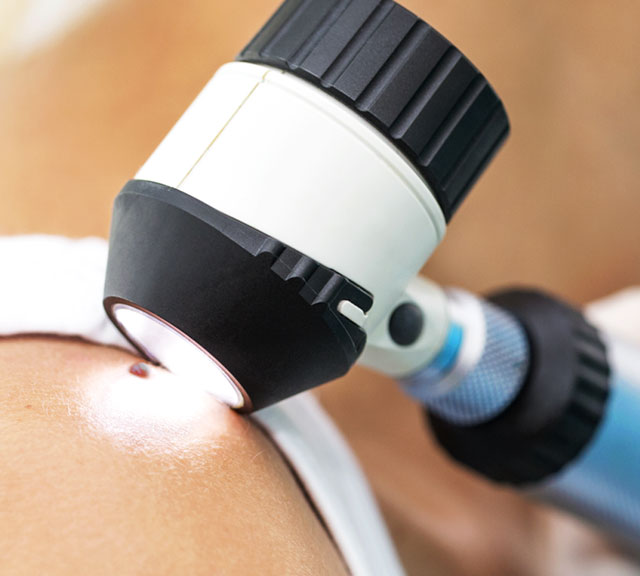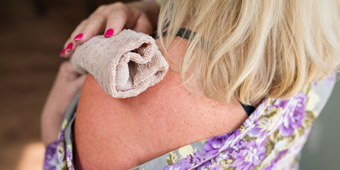When Should I Worry About Skin Moles?

Find Your Perfect Match
Answer a few questions and we'll provide you with a list of primary care providers that best fit your needs.
How many moles do you have? If you’re like most adults, you have between 10 and 40. The lighter your skin, the more likely you are to have moles.
You might have been born with a mole or two at birth, but most appear later in childhood and develop through age 30. In older people, moles tend to fade away.
What is a Common Mole?
Most moles are known as common moles — also called a nevus (“nevi” is the plural). Common moles are growths on the skin that develop when pigment cells (melanocytes) grow in clusters. You probably have moles mostly above your waist on areas exposed to the sun.
A common mole:
- Is usually smaller than a quarter-inch (less than a size of a pencil eraser)
- Is round or oval
- Has a smooth surface
- Has a distinct edge
- Is often dome-shaped
- Has an even color of pink, tan, or brown
Most common moles are benign and don’t require treatment. You can have moles removed if you don’t like the way they look or feel.
Most common moles are benign and don’t require treatment.
What is an Atypical Mole?
Atypical moles — also called dysplastic moles — look different than common moles but are also very prevalent. In fact, one of every 10 Americans has at least one atypical mole.
Atypical moles:
- Are larger than common moles
- Have irregular borders
- Have a variation in color within the mole
- May fade into surrounding skin and include a flat portion level with the skin
Do I Need to Worry About Moles?

Atypical moles are considered to be precancerous. That means they are more likely to turn into melanoma (a serious type of skin cancer) than regular moles. But not everyone who has atypical moles gets melanoma. In fact, most moles — both ordinary and atypical — never become cancerous.
Moles may become a problem if they appear after you’re 30, or if they change in certain ways. These moles may turn into melanoma.
Know where your moles are and check them once a month for any of these differences:
- The color changes.
- The mole gets unevenly smaller or bigger.
- The mole changes in shape, texture, or height.
- The skin becomes dry or scaly.
- The mole becomes hard or feels lumpy.
- It starts to itch, bleed, or ooze.
Also, as part of your physical, ask your health care provider to do a thorough skin exam. Awareness of any changes is the first step toward protecting yourself from skin cancer.
Find Your Perfect Match
Answer a few questions and we'll provide you with a list of primary care providers that best fit your needs.
Source: National Cancer Institute (NIH); American Academy of Dermatology; American Osteopathic College of Dermatology




